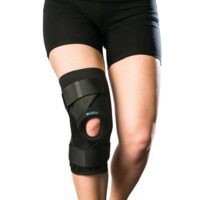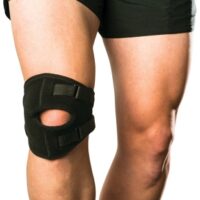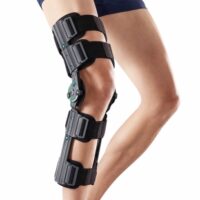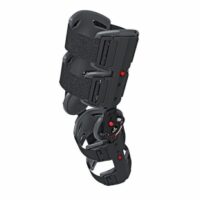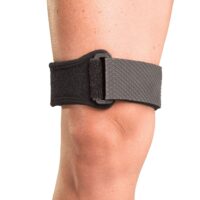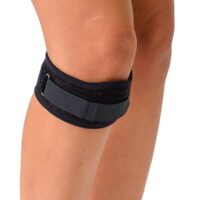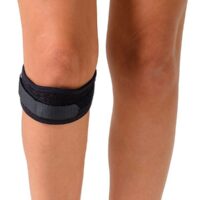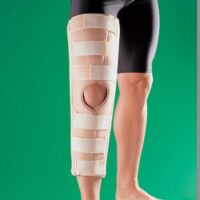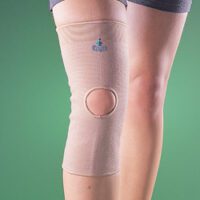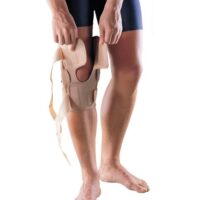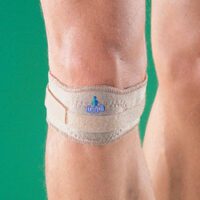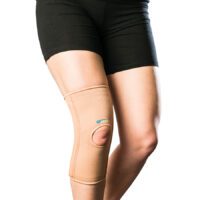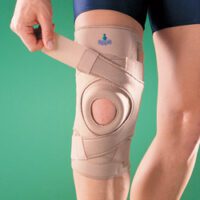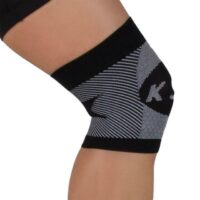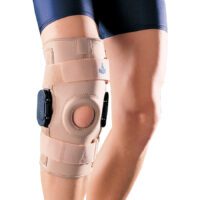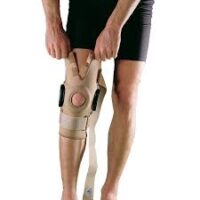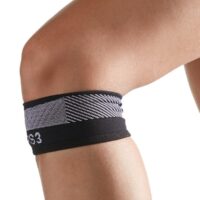Chondromalacia Patella
Article by John Miller

What is Chondromalacia Patella?
Chondromalacia patella is a condition that causes anterior knee pain, commonly affecting young, otherwise healthy athletes. Chondromalacia patella occurs when the undersurface of the kneecap becomes irritated, leading to cartilage softening. The kneecap, or patella, is usually covered with smooth cartilage, allowing it to glide smoothly during joint movement. However, the kneecap may rub against one side of the knee joint in individuals with malalignment issues, causing irritation and knee pain.
When knee pain occurs without cartilage softening, medical professionals refer to it as patellofemoral pain syndrome.
What are the High-Risk Sports?
High-risk sports include football, cycling, rowing, tennis, ballet, equestrian, gymnastics, volleyball, weightlifting, skiing, snowboarding, and running. These sports involve running, jumping, squatting, and landing, which increases the likelihood of experiencing kneecap pain. Additionally, even non-sporting individuals may experience kneecap pain when climbing up or down stairs.
The condition typically arises from either an acute injury to the patella joint surface or chronic friction between the patella and the groove in the femur (thigh bone), occurring during knee bending. Potential causes of this condition include tight lateral knee structures like the ITB, weak medial quadriceps (specifically the vastus medialis oblique – VMO), overpronation of the feet, and weak lateral hip rotator muscles. These muscle imbalances result in rotational instability, causing the patella to align laterally in the femoral groove and leading to pain due to malalignment.
The good news is that physiotherapy assessment and intervention can effectively address patellar maltracking. Many patients experience relief from pain after just one treatment session, and they can often leave the clinic pain-free. Please consult with a physiotherapist for proper guidance and advice.
Chondromalacia Patella Treatment
Physiotherapy intervention has been confirmed by researchers as a highly effective solution, both in the short and long term, for treating kneecap pain associated with chondromalacia patella.
Exercise-based treatments have shown favourable results in over 90% of individuals suffering from patellofemoral syndrome. It is common for patients to experience significant pain relief and become pain-free within six weeks of starting a rehabilitation program guided by a physiotherapist.
In cases where conservative treatment does not respond, an orthopaedic surgeon may consider surgery to repair severely damaged or arthritic joint surfaces.
The primary goal of treatment is to reduce pain and inflammation in the short term and, more importantly, to address the condition’s underlying cause to prevent its recurrence in the long term.
The progression from one stage of treatment to the next depends on individual factors. Your physiotherapist will determine progress during the clinical assessment. It is essential to carefully monitor exercise progression, as advancing too soon to the next level can lead to reinjury and delay recovery.
The treatment process involves several phases:
Phase 1 – Injury Protection:
This phase focuses on pain relief and includes rest, ice application, and protective measures such as kinesiology supportive taping. During this phase, physiotherapists may use pain-relieving techniques, joint mobilisations, massage, strapping, and acupuncture.
Phase 2: Regaining Full Range of Passive Motion:
Range of motion exercises and techniques are employed to restore normal kneecap and knee joint movement.
Phase 3: Restoring Full Muscle Length:
Stretching exercises and foam rollers will address tight thigh, hamstring, and calf muscles that may be causing tension or pressure on the kneecap.
Phase 4: Normalising Quadriceps Muscle Balance:
The physiotherapist assesses and addresses any muscle imbalances in the quadriceps, usually through a specific knee strengthening program.
Phase 5: Hip and Foot Control
During the treatment process, the physiotherapist assesses foot and hip control to normalise foot and hip biomechanics. They may recommend interventions such as foot orthotics or hip stabilisation programs to improve biomechanics.
Phase 6: Normalising Movement Patterns:
Correcting poor movement habits, such as abnormal gait, jumping, landing, running, or squatting techniques, is essential to prevent a recurrence of kneecap pain.
Phase 7: Restoring High Speed, Power, Proprioception, and Agility:
Balance, proprioception, and sport-specific training are incorporated to prepare individuals for a safe return to high-intensity activities.
Phase 8: Return to Sport:
Sport-specific exercises and a progressed training regime to facilitate a safe and complete return to the chosen sport.
Sometimes, a patellofemoral brace may help as an alternative to taping for managing chondromalacia patella.
Conclusion
In conclusion, chondromalacia patella can cause knee pain, especially in high-risk sports. However, physiotherapy intervention offers effective treatment options.
Exercise-based treatments deliver positive outcomes for over 90% of individuals, while doctors consider surgery for severe cases. Consulting a physiotherapist is vital in addressing the chondromalacia patella and achieving a successful recovery.
Related Articles
- Effective Management Of Fat Pad Syndrome: Offers insights into knee conditions like Chondromalacia Patella and treatment options.
- Patella Enthesopathy: Discusses treatments for knee pain arising from various conditions, including Chondromalacia Patella.
- Knee Bursitis: Explains conditions leading to knee pain, including Chondromalacia Patella, and treatment methods.
- Patellar Tendinopathy: Provides information on conditions causing kneecap pain, relevant for those with Chondromalacia Patella.
- Patellofemoral Pain Syndrome (PFPS): Offers a comprehensive overview of kneecap pain, including conditions like Chondromalacia Patella.
Knee Pain Causes
A Comprehensive Guide
Knee pain is often a symptom of underlying issues ranging from acute injuries to systemic health conditions. Identifying knee pain causes is essential for effective treatment. This guide offers an overview of potential culprits, providing a pathway to understanding and addressing your knee discomfort.
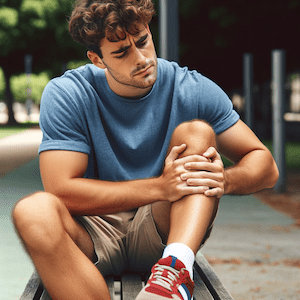

Knee Ligament Injuries
Ligament injuries, such as ACL and PCL tears, are significant knee pain causes. They can lead to instability and severe discomfort, requiring prompt medical evaluation.
- ACL Injury
- PCL Injury
- MCL Sprain
- LCL Sprain
- Posterolateral Corner Injury
- Superior Tibiofibular Joint Sprain
- Symptoms of a Torn Ligament
- Walking with a Torn Ligament
ACL Injuries
An ACL injury is a common sports-related knee injury that can lead to long-term knee pain and require surgical intervention.
- Is Surgery Needed?
- Living Without an ACL
- Main Function of the ACL
- Untreated ACL Injury
- Symptoms of an ACL Tear
- Diagnosing an ACL Tear
- Best Surgery for ACL Tear
- Post-ACL Reconstruction Rehabilitation
Knee Meniscus Injuries
Meniscus tears, often caused by twisting or turning quickly, are prevalent knee pain causes, with treatment options varying based on severity.
Kneecap Pain
Pain in the kneecap can arise from various conditions, affecting your ability to engage in daily activities comfortably.
- Chondromalacia Patella
- Fat Pad Syndrome
- Patella Dislocation
- Patellofemoral Pain Syndrome
- Patellar Tendinopathy
- Quadriceps Tendinopathy
- Osgood Schlatter’s Disease
- Sinding Larsen Johansson Syndrome
Knee Arthritis
Arthritis is a leading cause of knee pain, particularly in older adults, with symptoms that can significantly impair quality of life.
Knee Tendon Injuries
Tendon injuries can result from overuse or sudden, high-impact activities, contributing to ongoing knee pain.
Muscle Injuries
Muscle strains and related conditions are common knee pain causes, especially among athletes and active individuals.
- Corked Thigh
- Thigh Muscle Strain
- Hamstring Strain
- ITB Syndrome
- Popliteus Syndrome
- Muscle Strain
- Muscle Cramps
- DOMS – Delayed Onset Muscle Soreness
Knee Bursitis
Inflammation of the bursae can cause significant knee pain, often requiring targeted treatment to reduce symptoms.
Children’s Knee Conditions
Young athletes can experience specific knee conditions related to growth and activity levels.
Other Knee-Related Conditions
Various other conditions can lead to knee pain, necessitating a broad understanding of potential knee pain causes.
- Baker's Cyst
- Runner’s Knee
- Reducing Knee Stress for Runners
- Plica Syndrome
- Fibromyalgia
- Stress Fracture
- Overuse Injuries
- Restless Legs Syndrome
Knee Surgery
In some cases, surgical intervention may be the best option to address certain knee pain causes effectively.
Seek Professional Advice
For tailored information regarding your knee pain, consult a healthcare professional with experience in knee conditions, such as a knee physiotherapist, sports physician or knee surgeon. They can provide a personalised assessment and treatment plan to address your specific needs.
Knee Pain Products & FAQs
A variety of products can support knee pain management. Browse our selection and read our FAQs to learn more about how to alleviate knee discomfort. More info: Knee Pain Products & FAQs
With this guide, you’re better equipped to understand the various knee pain causes and take the first step towards recovery. Remember, early intervention by a skilled physiotherapist can significantly improve your outcomes and assist in returning you to a pain-free, active lifestyle.
Knee Pain FAQs
Knee pain is a widespread issue, impacting individuals of varying ages and lifestyles. Causes range from injuries and wear and tear to conditions like arthritis. This FAQ section aims to provide insights into knee pain, covering diagnosis, ligament issues, ACL injuries, meniscal injuries, age and arthritis concerns, and pain relief methods through exercise and treatment.
Feel free to click on the questions to for deeper discussions into each topic.
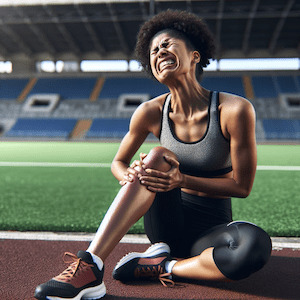

Diagnosis Related
How Can I Determine If My Knee Injury Is Serious?
- Learn to assess the severity of your knee injury based on symptoms and situations.
How Can I Identify The Type Of Knee Injury I Have?
- Discover how different knee injuries manifest and what signs to look for.
When Should I Seek a Physiotherapist or Doctor for My Knee Injury?
- Find out the right time to consult professionals for your knee concerns.
Is Knee Clicking a Sign of a Serious Condition?
- Understand what knee clicking indicates about your joint health.
When Should I Consider Getting a MRI for My Knee?
- Learn about the circumstances when an MRI becomes necessary.
Why Has My Knee Suddenly Started Hurting?
- Explore potential reasons behind sudden knee pain.
Why Does My Knee Hurt On The Inner Side?
- Identify causes of inner knee pain and when to seek help.
Knee Ligament Related
What Are The Common Symptoms of a Torn Ligament in the Knee?
- Recognise the signs of a torn knee ligament.
Can I Walk With A Torn Ligament In My Knee?
- Understand the feasibility and risks of walking with a torn ligament.
ACL Related
What are the Consequences of Not Getting Surgery for an ACL Injury?
- Learn about the long-term effects of untreated ACL injuries.
What Are The Symptoms Of An ACL Tear?
- Identify the key signs of an ACL tear.
Meniscus Related
Is Surgery Necessary for a Meniscal Injury?
- Discover when surgery is essential for meniscal injuries.
Can a Torn Meniscus Heal Without Surgery?
- Find out if meniscal tears can heal naturally.
Age & Arthritis Related
At What Age Do Knee Problems Typically Begin?
- Learn about the onset age for common knee problems.
What are the Common Symptoms of Arthritis in the Knee?
- Identify arthritis symptoms in the knee.
Running Related
What are Some Ways that Runners Can Reduce Knee Stress?
- Explore methods for runners to minimise knee stress.
Knee Treatment & Exercise Related
Is Walking Good For Knee Pain?
- Understand the benefits of walking for knee pain.
What are Some Effective Ways to Relieve Knee Pain?
- Discover various methods to alleviate knee pain.
How Much Walking is Recommended for Individuals with Knee Pain?
- Learn the ideal walking duration for those with knee pain.



